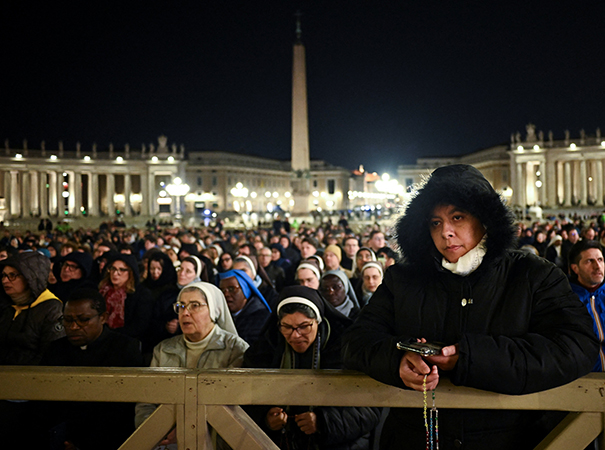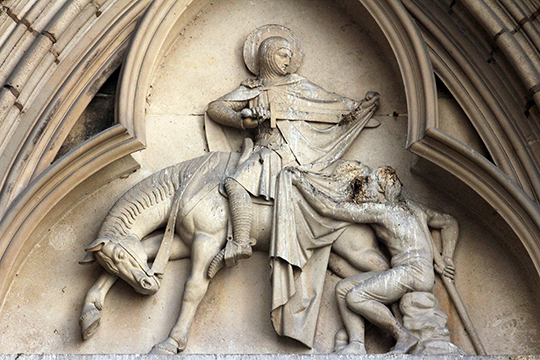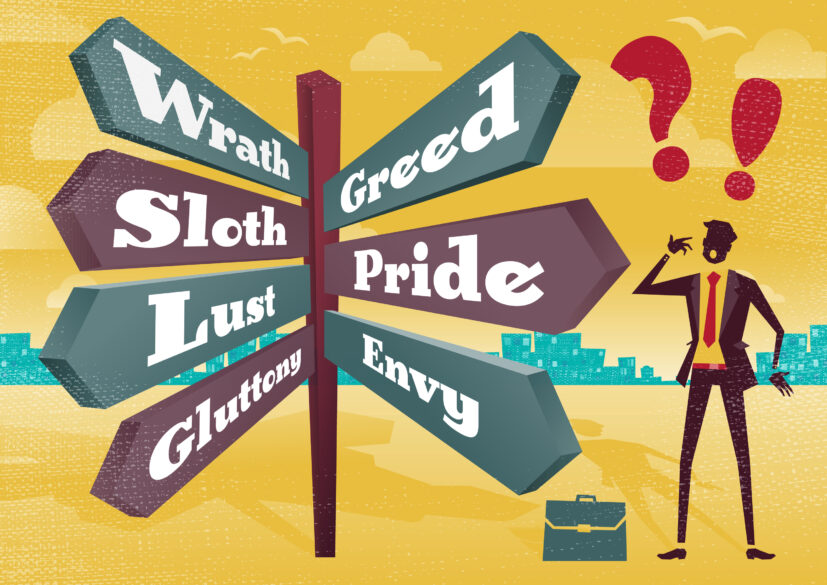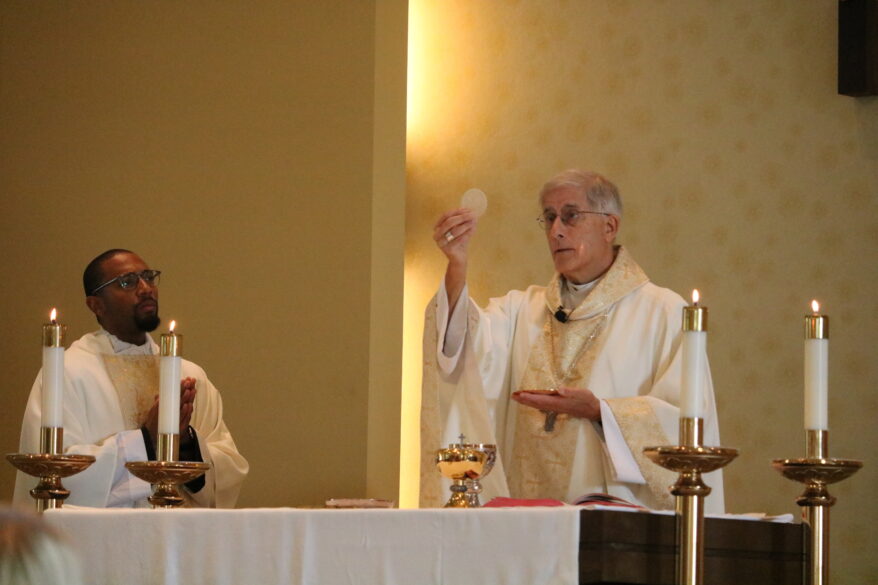Reflections on Life
By Melvin Arrington
Among the countless fictional detectives on TV and in the movies, one stands out above all the others for his rock-solid faith, his vast knowledge of the inner workings of the criminal mind, and his unyielding efforts to catch lost souls and lead them back into the fold. This detective also happens to be a priest. Of course I’m referring to Father Brown, created by Catholic convert G. K. Chesterton (1874-1936) who, oddly enough, had not yet converted when Father Brown made his first appearance in a 1910 short story, “The Blue Cross.”
Chesterton based his immortal amateur sleuth on Father John O’Connor, a parish priest who would come to play a major role in his conversion to the Catholic faith. From conversations with Father O’Connor, Chesterton devised the notion of “constructing a comedy in which a priest should appear to know nothing and in fact know more about crime than the criminals.” This basic irony, which persists throughout the stories, has a startling explanation: Father Brown has intricate knowledge of criminal behavior because he has heard all the sordid details in the confessional.
Chesterton wrote more than fifty short stories scattered across five volumes about his famous crime-solving clergyman. In the first collection, “The Innocence of Father Brown” (1911), he describes his most celebrated creation as “a very short Roman Catholic priest [with] a face as round and dull as a Norfolk dumpling [and] eyes as empty as the North Sea.” He also makes reference to “his quaint blending of Essex flatness with saintly simplicity” and the “large, shabby umbrella” he carries. With this minimal description Chesterton leaves it to his readers’ imagination to fill in the details of what this man of the cloth looks like.
As a result of the lack of more specific information about the character’s appearance, the manner in which he has been portrayed has varied considerably. To date, at least ten actors have interpreted Chesterton’s mystery-solving cleric on the large and small screens. The first was an American, Walter Connolly, who starred in “Father Brown, Detective,” a movie released in 1934, during Chesterton’s lifetime.
One of the most notable performances was given by Kenneth More, who took on the role for a 1974 British TV series lasting thirteen episodes, each of which bears the title of a Chesterton story and is, generally speaking, faithful to the source material. Also worth noting is a 1979 film, “Sanctuary of Fear,” a typical made-for-TV movie of that period. Set in New York City, far removed from the fictional universe of the original stories, it stars Barnard Hughes, who gives a competent performance but, unfortunately, he bears little or no resemblance to the way Father Brown’s creator imagined him. The performer who currently plays the part, the likeable English actor Mark Williams, has starred in the long-running British TV series about the priest/detective since 2013. It’s paradoxical that Williams has been so successful because he is a large man, over six feet tall, playing a character who is, by all accounts, “very short.”
All the versions mentioned so far, except the 1934 film, are in color. A black-and-white production, however, seems more appropriate for creating the atmosphere of the shady world of crime. Although I wouldn’t brand these movies and TV episodes as film noir, it seems logical that the dramatization of detective stories, normally associated with the realm of shadows and the interplay of light and darkness, would achieve greater stylistic effect in black-and-white.
With these technical aspects in mind, let’s move on to the screen version that captures the essence of Chesterton’s creation better than any of the other adaptations: the 1954 black-and-white film “The Detective,” starring the distinguished English actor Alec Guinness as Father Brown. Guinness, by the way, would go on to receive a Best Actor Academy Award three years later for “The Bridge on the River Kwai” and gain lasting fame for his portrayal of Obi-Wan Kenobi in the “Star Wars” cinematic franchise.

Although of average height and thus much taller than Chesterton’s extremely short priest, Guinness fits the part perfectly because on screen he strikes the viewer as a small and insignificant figure, just the type to blend into the background and be overlooked and underestimated by lawman and lawbreaker alike. Guinness takes upon himself Father Brown’s humor, charm and eccentricities to such a degree that I can’t imagine anyone else improving on his performance. The strong supporting cast includes Peter Finch as the infamous international art thief, Flambeau, and Bernard Lee as Inspector Valentine, the police detective who obstinately chases after Father Brown while the latter stays hot on the trail of Flambeau.
“The Detective,” very loosely based on “The Blue Cross,” opens with a police car racing to the scene of a crime. There, we see a man hiding in the darkness. As soon as the police enter the building, this shadowy figure manages to make his exit undetected. What the officers discover is truly shocking: a priest in front of an open safe with stacks of money in his hands. But rather than taking the money out of the safe, he was actually putting it back in. We quickly learn that when the priest had first become aware of the theft, he had convinced the real burglar to let him return the money to the safe. Later, he sets up the would-be robber in an honest job as a chauffeur to one of his parishioners. This captures the essence of Father Brown: he will go to any extreme to win over the sinner and turn him away from a life of crime.
Father Brown’s primary concern in “The Detective” involves the capture of Flambeau, but, oddly enough, he has no desire to put the thief behind bars; his only concern is for the state of his quarry’s soul. Like the “Hound of Heaven” going after His prey, the little priest is relentless in his pursuit of the famous criminal. He never gives up because, as Archbishop Fulton J. Sheen says, “unless souls are saved, nothing is saved.”
Little children also have a part to play in this drama of salvation. Although on camera only briefly, their appearance speaks volumes, especially if one calls to mind the prophecy that “a little child shall lead them” (Isaiah 11:6) and the words of Jesus: “Truly I tell you, unless you change and become like children, you will never enter the kingdom of heaven.” (Matthew 18:3) In order not to give away the climactic scene, I’ll not say anything else on this subject.
As a postscript, it’s worth noting that while the film crew was shooting on location in France a dramatic episode occurred involving Guinness and a little child. This scene was definitely not in the script. During a break in filming, Guinness, rather than changing clothes, decided to remain in clerical attire. A little boy spotted him, grabbed him by the hand, and called out “Father, Father” in French. Although Guinness’ French was inadequate to carry on a conversation, the actor was, nevertheless, deeply moved that the child, a total stranger, felt a close attachment to him simply because the boy thought he was actually a priest.
Not long after this incident, Guinness converted to Catholicism. Father Brown’s tenacity paid off. He caught another one.
You can catch “The Detective” now streaming for free on Tubi.
(Melvin Arrington is a Professor Emeritus of Modern Languages for the University of Mississippi and a member of St. John Oxford.)






